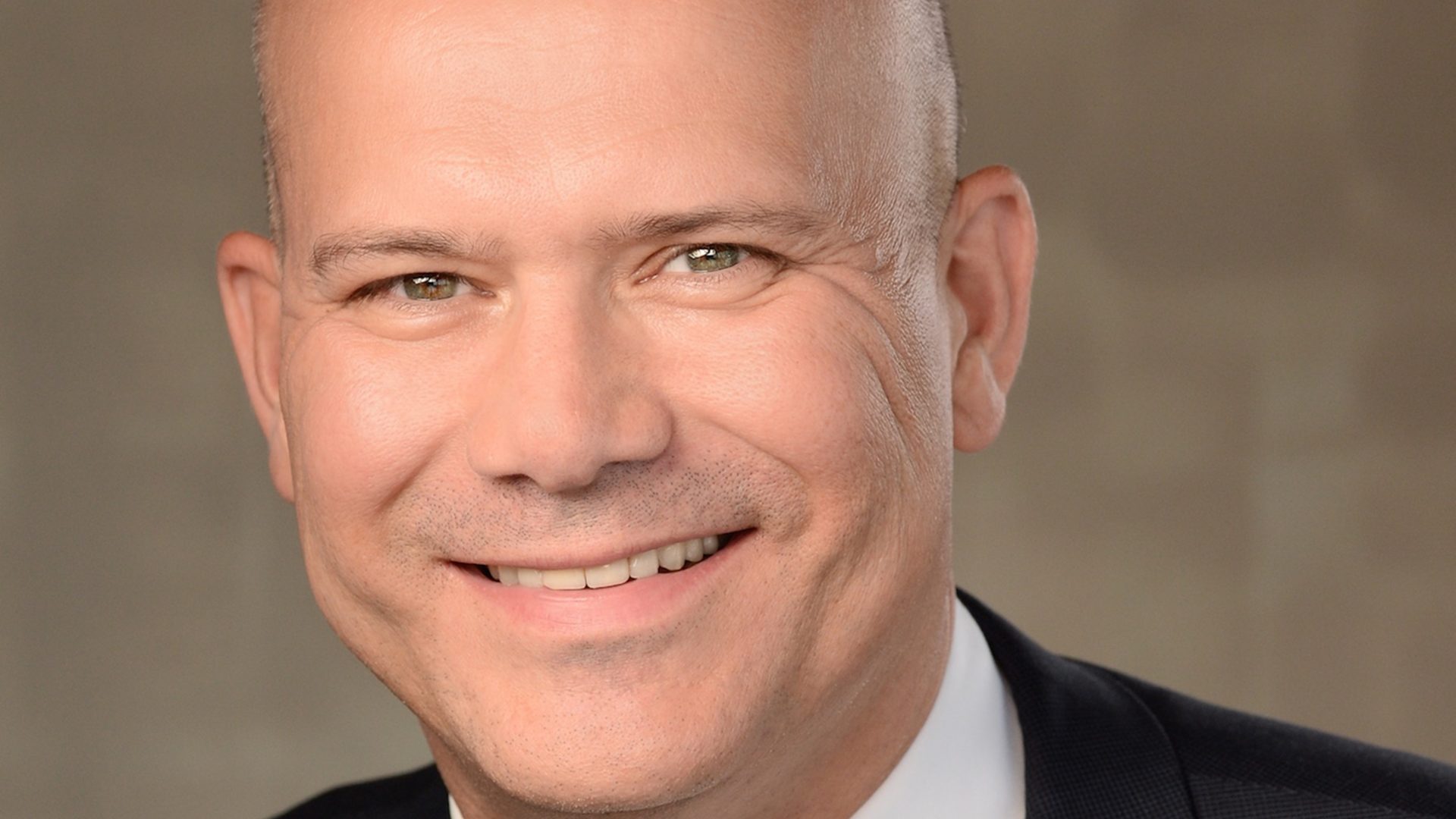Pieter Bierkens, Group Interest Rate Benchmark Reform Lead at the Commonwealth Bank of Australia and Chair of the Australian Financial Markets IBOR Transformation Working Group, shares his views and insights with SOFR Academy on the transition from LIBOR to risk-free rates.
SOFR Academy: Thank you for sharing your views with SOFR Academy on this important topic. Your career includes time working in the United States, Europe and Australia during which you have seen a number of regulatory and market structure changes. How would you characterize LIBOR transition in this context?
Pieter Bierkens: What is unique about LIBOR’s transition is that while the timelines are ‘overseen’ by regulators, it is actually a ‘market led’ transition. So it is very much a change where market participants, industry groups, and regulators have collaborated across all asset classes to get to the right outcomes. LIBOR transition is the largest change to financial markets in a very long time. Ultimately, it will help improve the functioning of our financial system.
SOFR Academy: You Chair the national IBOR Transformation working group at the Australian Financial Markets Association (AFMA), in what ways does Australia’s experience of LIBOR transition perhaps differ from the transition experienced in other countries?
Pieter Bierkens: The Australian ‘IBOR’ is BBSW. That benchmark remains robust, which has allowed Australia to pursue a multiple-rate approach for our local reference rates. This means that, unlike for LIBOR, regulators in Australia aren’t advocating a wholesale transition from BBSW to referencing the domestic risk-free rate (RFR), which in Australia’s case is the cash rate, also known as AONIA.
Instead, it is expected that market participants choose robust reference rates that best suit each of their products and situations, taking into account their own and their clients’ needs or hedging strategies.
As markets transition from referencing LIBOR to RFRs, there may be some corresponding migration away from BBSW towards the use of the cash rate/AONIA.
That said, Australian financial institutions are of course users of LIBOR, in products such as cross-currency swaps and multi-currency loan facilities among others. As such, that affects our jurisdiction directly as well.
“LIBOR transition is the largest change to financial markets in a very long time. Ultimately, it will help improve the functioning of our financial system.”Pieter Bierkens, Group Interest Rate Benchmark Reform Lead at the Commonwealth Bank of Australia
SOFR Academy: Australia’s local regulator, the Australian Securities and Investment Commission (ASIC), recently issued some guidance on conduct risk relating to LIBOR transition. How are you thinking about conduct risk and does it differ across institutional clients compared to retail (consumer) clients?
Pieter Bierkens: Managing conduct risk is clearly a critical part of the transition process. There are a number of components to it including, importantly, communication with clients. What ASIC has made clear is that communication strategies should be tailored to the sophistication of respective client segments as well as to the complexity of the products and services they are associated with. As such, one would expect the approach to retail clients to be different from the approach to institutional clients, though the expectation of fair customer outcomes remains the same for all.
It is worth noting that given the widespread use of BBSW (our IBOR) in Australia, the use of LIBOR among Australian retail clients is relatively less significant than it may be elsewhere, like in the US.
SOFR Academy: The AUD Overnight Index Average, or AONIA, is the officially sanctioned Alternative Reference Rate for Australian dollar-based transactions. For those that aren’t familiar with AONIA, could you tell us a bit about it?
Pieter Bierkens: AONIA is administered by the Reserve Bank of Australia (RBA) and calculated as the weighted average interest rate on unsecured overnight loans between banks, hence the acronym AONIA (AUD Overnight Index Average). AONIA is also the fallback rate to BBSW in the just-published ISDA Fallback Protocol.
SOFR Academy: Turning to the impact of Covid-19, Australia was swift to implement testing and quarantine measures. To what extent do you think Covid-19 impacted CBA’s LIBOR transition program?
Pieter Bierkens: COVID-19 was such a seminal event in the world and in financial markets, that all institutions would have paused, if only for a moment, to assess their priorities. In this context it was helpful that the UK’s Financial Conduct Authority (FCA) made it very clear early on, that the LIBOR timelines remained in place. That focused everyone’s attention and, from then on, it was full steam ahead.
Interestingly, COVID-19 has illustrated the importance of moving from LIBOR to RFRs. As the Bank of England has pointed out, and I am quoting now:
“in the week of 16 March 2020, as central bank policy rates were reduced to historically low levels, making cheaper funding available to banks, ‘transaction based’ submissions in three-month sterling LIBOR fell to zero. Over half of the 35 published LIBOR rates across all currencies contained no transaction based submissions at all during that same week. At the same time LIBOR rates, and therefore costs for borrowers, spiked upwards based on firms’ expert judgement”.
SOFR Academy: Cross-currency basis swaps are a particularly important product for the Australian banking sector. What are some of the key considerations for this product in the context of IBOR transition? Does a potential extension of the most heavily referenced USD LIBOR tenors create additional challenges for cross-currency basis swaps?
Pieter Bierkens: One of the considerations is whether the legs of a cross-currency swap that currently references both a LIBOR and a continuing IBOR (such as BBSW) will transition to referencing a RFR on both legs, or just on one of the legs. This issue may also come up in LIBOR / LIBOR cross-currency swaps, now that USD LIBOR is expected to continue – in most of its tenors – longer than the other currency LIBORs. Put differently, the fallbacks on the respective legs may not be triggered at the same time. I should also point out the important work done by the ARRC and others to come to suitable RFR conventions in the cross-currency swaps market.
“COVID-19 was such a seminal event in the world and in financial markets, that all institutions would have paused, if only for a moment, to assess their priorities.”Pieter Bierkens, Group Interest Rate Benchmark Reform Lead at the Commonwealth Bank of Australia
SOFR Academy: The pace of transition has been somewhat uneven across asset classes as well as jurisdictions. What is your sense of where we are at the moment?
Pieter Bierkens: It is clear that the pace of transition will continue to pick up as we head into 2021. After all, four of the five LIBORs are expected to discontinue in a little over 10 months’ time. A number of recent developments have been really important in the overall transition process. We had the ISDA Fallbacks Supplement and Protocol take effect on January 25 of course as well as the CCP switch to ESTR discounting and then SOFR discounting in October of last year.
The Australian Working Group welcomed the launch of the ISDA Protocol and Fallbacks Supplement, which focus on strengthening existing and new derivatives contracts with robust fallback language for a number of the IBOR benchmarks.
Beyond that, we have seen the publication of a number of important milestones / timelines by regulators, as well as the development of conventions in the loan market. For a number of reasons, the loan market has been slower in adopting RFRs than the other asset classes, but the missing pieces of the puzzle are now falling into place as market conventions are being finalized and adopted.
SOFR Academy: What are your thoughts on the expected delay in USD LIBOR’s transition?
Pieter Bierkens: I would expect the delay, once it is announced, to be welcomed by the market. As the FCA pointed out, this will incentivise swift transition, while allowing time to address a significant proportion of the legacy contracts that reference USD LIBOR.
I think it is important to emphasise that the milestones for transition for USD LIBOR as articulated in the US’s Alternative Reference Rates Committee (ARRC)’s “Recommended Best Practices” have not changed. US regulators encourage banks to cease entering into new contracts that use USD LIBOR as a reference rate as soon as practicable and in any event by December 31, 2021.
SOFR Academy: What is your view on the various initiatives (synthetic LIBOR, legislative relief) to manage ‘tough legacy’?
Pieter Bierkens: Clearly, tough legacy is a critical challenge and the initiatives you highlight are very important in this regard. The Australian Working Group has expressed its support for the legislative proposals put forward in New York State
The expected delay in USD LIBOR’s discontinuance should not be a reason to delay one’s preparation for LIBOR transition. It is important to stay informed and to engage with your counterparties. I also encourage everyone to have regard to the very informative websites of regulators, and the various working groups and industry groups.
One may find the challenge of LIBOR transition daunting, but don’t forget, we are all in this together!
SOFR Academy: Thank you very much, Pieter.
Pieter Bierkens: Thank you.
ABOUT THE AUTHORS
Pieter Bierkens is Group Interest Rate Benchmark Reform Lead, Institutional Banking and Markets at the Commonwealth Bank of Australia. This interview was conducted by Marcus Burnett, Director of SOFR Academy based in New York. For press enquiries please contact [email protected]




